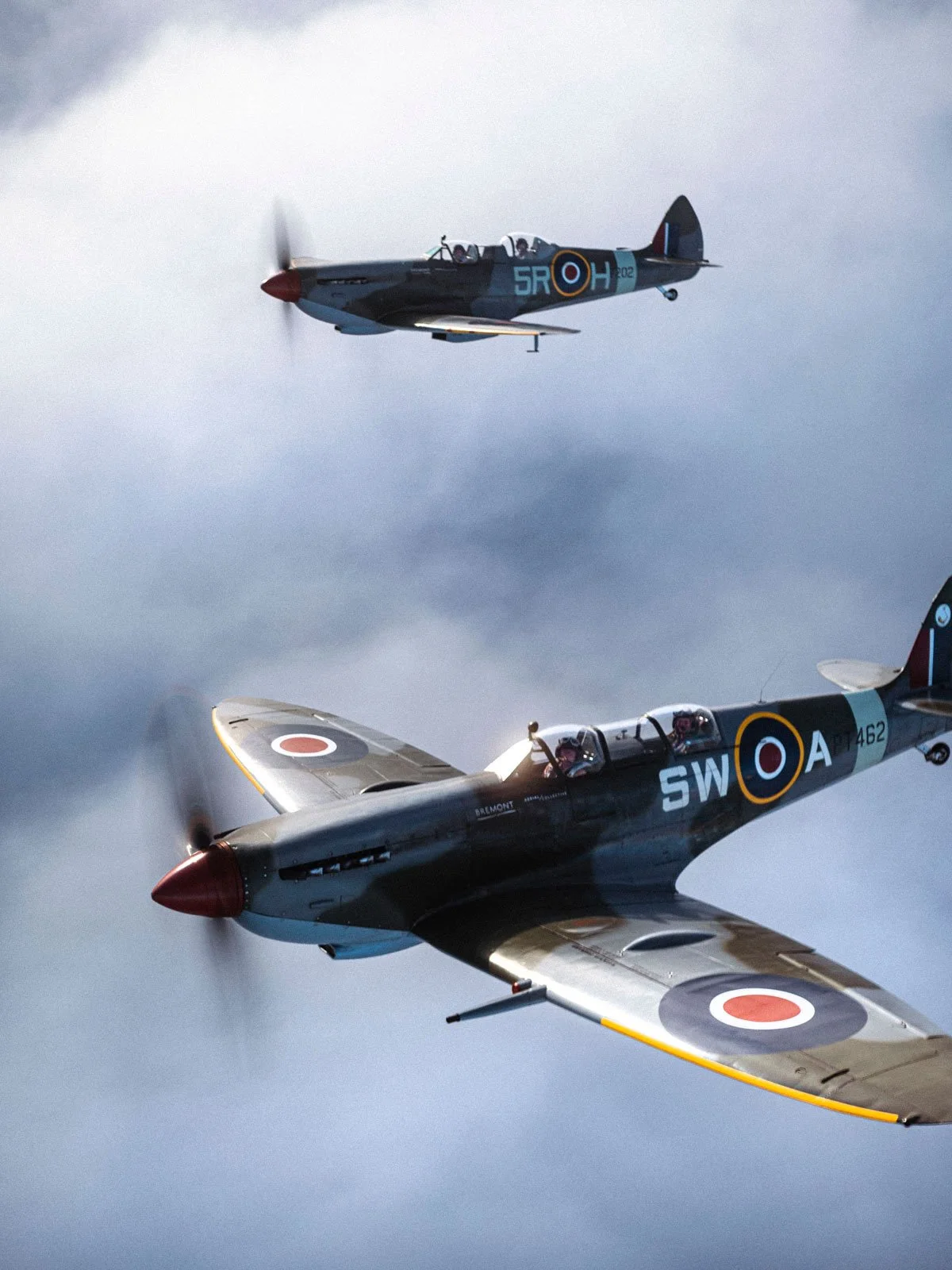SUPERMARINE SPITFIRE IX PT462
Spitfire PT462
Supermarine Spitfire PT462 (G-CTIX) was constructed at Castle Bromwich as a single seat HFIX variant. Following preparation for active service at RAF Colerne in July 1944, the aeroplane was taken to Dumfries and loaded onto the Silver Sandal for shipment out to the Mediterranean theatre. Records place PT462 with 4 Squadron, South African Air Force in Italy in November 1944 coded ‘KJ-Z’ based initially at Bellaria and later Forli. In early 1945 the Spitfire was transferred back to the Royal Air Force – it is thought to have spent time with 73 and 326 Squadrons before moving to 253 Squadron where it gained the codes ‘SW-A’. As the war in Europe was in its final chapter, most of the aircraft’s operations consisted of reconnaissance and strafing of targets rather than the air-to-air combat more typically associated with the type. PT462 remained on the strength of 253 Squadron for the next two years, moving between bases in Yugoslavia, Austria, and Italy. In May 1947 the squadron disbanded and the Spitfire was quickly sold to the Italian Air Force where it gained the registration MM4100 with 5 Stormo based at Orio al Serio.
In April 1952 the aeroplane changed hands again, having been purchased by the Israeli Air Force – the identity was changed to 20-67 and the wartime veteran entered service with 105 Squadron at Ramut David Air Force Base. The Israeli fleet of 16 Spitfires were retired in 1956, with several of the aircraft subsequently being donated to various Kibbutz throughout the country for static display purposes – 20-67 was no exception, ending up at Kibbutz Kfar-Gaza. In 1976 the Spitfire was photographed with its 4 Squadron markings ‘KJ-Z’ from over 30 years previous faintly visible through the fading paint scheme. In outdoor storage the aircraft’s condition continued to deteriorate and eventually PT462 was buried at the municipal dump.
Vintage aircraft enthusiast and racing driver Robs Lamplough came to learn of the aeroplane’s fate and succeeded in recovering the Spitfire from the rubbish dump and returning it to the UK in 1983. Time had not been kind; the remains of the aircraft totalled the propeller hub, engine, and front fuselage section – everything else was missing.
The following year the project was sold to property magnate and warbird collector Charles Church who commenced a rebuild of PT462 back to flying condition. Church opted to convert the aeroplane to the ‘low back’ two-seat configuration designed by Nick Grace and Dick Melton, and utilised the original wings of another ex-Israeli Spitfire, TE517. The wings were modified to incorporate the leading-edge fuel tanks as fitted to the Spitfire PRXI, giving a significant increase to the aeroplane’s range. In July 1987, PT462 returned to flight with the civil registration G-CTIX, in the hands of the Shuttleworth Collection’s then chief pilot, John Lewis. Charles Church tragically passed away in 1989 and in due course the Spitfire was shipped to new owners in Florida and registered N462JC.
Whilst in America, PT462 regained the ‘SW-A’ codes it had worn for most of its RAF service, and the aircraft flew extensively over the subsequent years. In 1998 the Spitfire was purchased by Welshman Anthony Hodgson who had the aeroplane returned to the UK. The aircraft’s association with the Aircraft Restoration Company (ARCo) commenced at that point, with the disassembly and reassembly being performed by ARCo engineers, and company Managing Director John Romain test flying the Spitfire upon completion. Anthony Hodgson subsequently converted to the Spitfire later that year and flew it both at events and privately from his airstrip in Wales for the next 19 years – the aircraft returning to Duxford on an annual basis for maintenance.
In 2017, Anthony Hodgson sold G-CTIX to ARCo where it joined the company’s other two seat Spitfire – PV202/G-CCCA, in short order, carrying out air display work and passenger flying. In 2018, PT462 was stripped back to bare metal and inspected before being repainted in a more authentic version of its 253 Squadron livery, complete with squadron artwork and smaller codes. Except for the second cockpit, the Spitfire now far more closely resembles the look of the aeroplane during its operational RAF service. With its lower rear canopy and cannon barrels jutting out the wing leading edges, PT462 is a distinctive Spitfire which now spends its days flying with Aerial Collective - ARCo’s in-house warbird experience provider - giving passengers the experience of a lifetime from here at our home base of Duxford Airfield, Cambridge.










